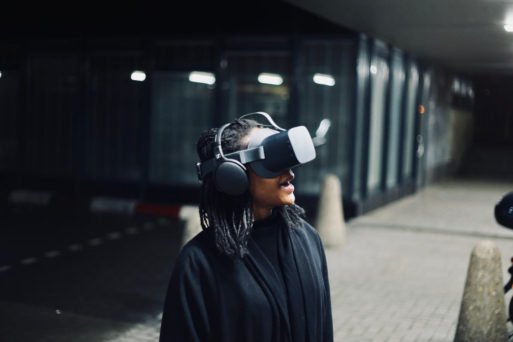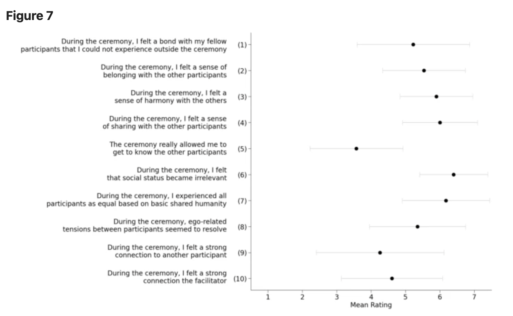
Death is nothing short of humanity’s most palpable, inescapable fear — but we’re starting to find some loopholes. Enter: virtual reality.
We’ve used everything from rituals to counseling to psychedelics to alleviate our end-of-life anxiety, so why wouldn’t we enlist technology to aid our quest? According to MIT Technology Review, one man is doing just that.
An Inspiring Hike
MIT shared the story of David Glowacki, an artist and computational molecular physicist, who took a hard fall one day on a hike. As Glowacki lay suffocating on the ground, his lungs filling with blood, he began to have a transcendent experience:
“Glowacki’s field of perception swelled. He peered down at his own body—and, instead of his typical form, saw that he was made up of balled-up light…
(The light) was transforming—leaking out of his body into the environment around him. This realization—which he took to signify that his awareness could outlast and transcend his physical form—brought Glowacki a sublime sense of peace.”
Glowacki wanted to share his experience and lucky for us, he is, again, a computational molecular physicist. Re-enter: virtual reality.
Can Virtual Reality Help Us Transcend Ourselves?
Glowacki gathered a team and began creating a virtual world that mimicked the transcendence he experienced on that hike. He called it “Isness-distributed” (Isness-D). Isness-D is a virtual reality program that aims to create ‘self-transcendent experiences’ (STEs) where people “dissolve their sense of self in connection to others.”
Once the participants put on their headsets and enter the program, they become balls of glowing light surrounded by a smokey essence. Many people who have near-death experiences describe being bathed in a similar type of glowing light. These colorful orbs, which appear similar to a chain of amino acids, can interact with each other:
According to one study, Glowacki’s program produces STEs with the same reliability as a medium dose of psilocybin mushrooms.

Participants in Isness-D study report their experience. | Credit: Nature.com
Virtual Reality Is Becoming a Legitimate Tool For End-of-Life
Glowacki has already begun using a shortened version of his program on patients, caregivers, and family members coping with terminal illness. He explains:
“What we’ve found is that representing people as pure luminosity really releases them from a lot of judgments and projections.”
And he’s not alone. Producers for the South Korean documentary “Meeting You,” helped a mother grieve her late daughter through virtual reality.
A producer of the documentary said the mother’s experience of connecting to the digital version of her daughter, Na-yeon, was helpful:
“I was worried how the mother would react. No matter how hard we tried to make the character similar, she still can tell the difference. But she said she was happy to see even the slight reflection of Na-yeon.”
Amazon is even developing a feature that will allow Alexa to speak in the voice of a deceased loved one.
While it’s unclear if virtual reality will be able to fully alleviate our fear of death, it’s good to see technology starting to connect us in a deeper way.

 How Virtual Reality Can Help You Make Peace With Death
How Virtual Reality Can Help You Make Peace With Death


 Our Annual Seven Holiday Gifts for Someone Who Is Grieving, 2024 Edition
Our Annual Seven Holiday Gifts for Someone Who Is Grieving, 2024 Edition
 “Making Mobiles” by Karolina Merska
“Making Mobiles” by Karolina Merska
 “Hands Up to the Sky” by Michael Franti & Spearhead
“Hands Up to the Sky” by Michael Franti & Spearhead














